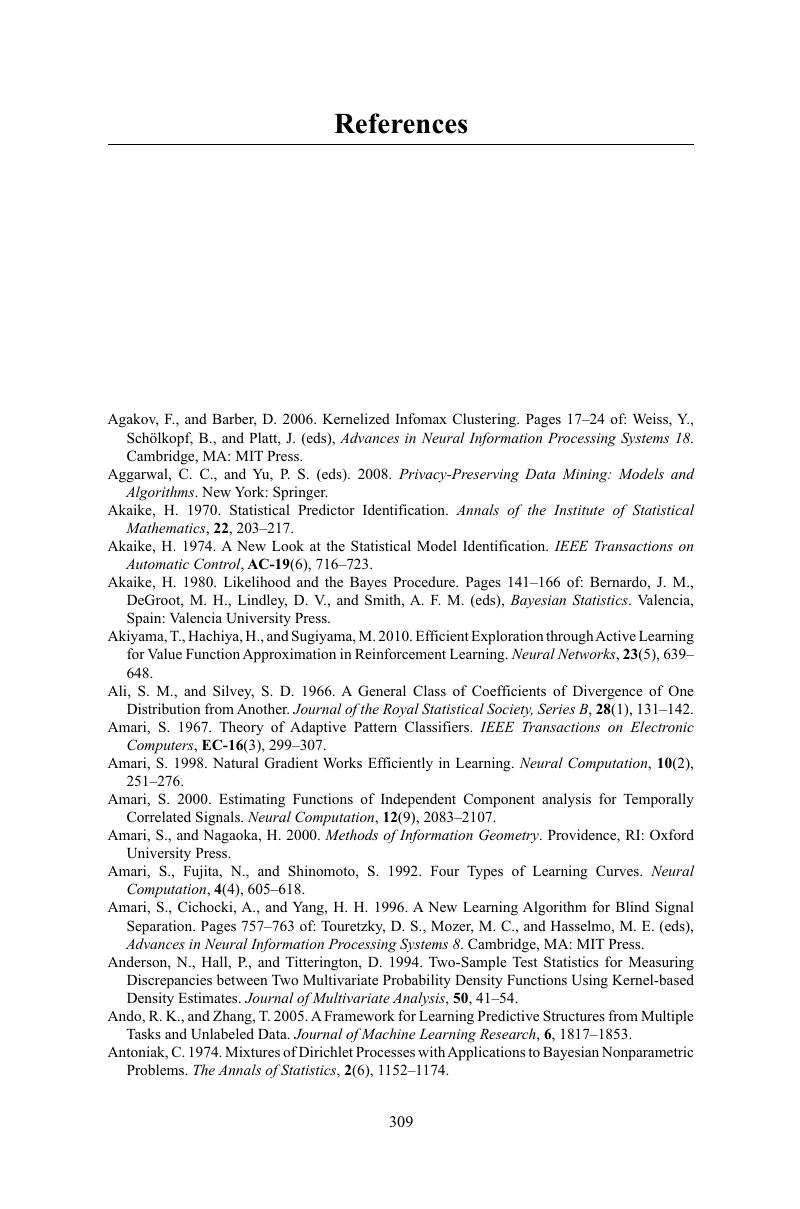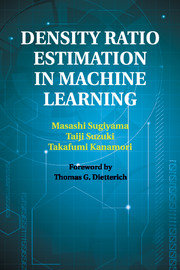Book contents
- Frontmatter
- Contents
- Foreword
- Preface
- Part I Density-Ratio Approach to Machine Learning
- Part II Methods of Density-Ratio Estimation
- Part III Applications of Density Ratios in Machine Learning
- Part IV Theoretical Analysis of Density-Ratio Estimation
- Part V Conclusions
- List of Symbols and Abbreviations
- Bibliography
- Index
- References
Bibliography
Published online by Cambridge University Press: 05 March 2012
- Frontmatter
- Contents
- Foreword
- Preface
- Part I Density-Ratio Approach to Machine Learning
- Part II Methods of Density-Ratio Estimation
- Part III Applications of Density Ratios in Machine Learning
- Part IV Theoretical Analysis of Density-Ratio Estimation
- Part V Conclusions
- List of Symbols and Abbreviations
- Bibliography
- Index
- References
Summary

- Type
- Chapter
- Information
- Density Ratio Estimation in Machine Learning , pp. 309 - 326Publisher: Cambridge University PressPrint publication year: 2012



